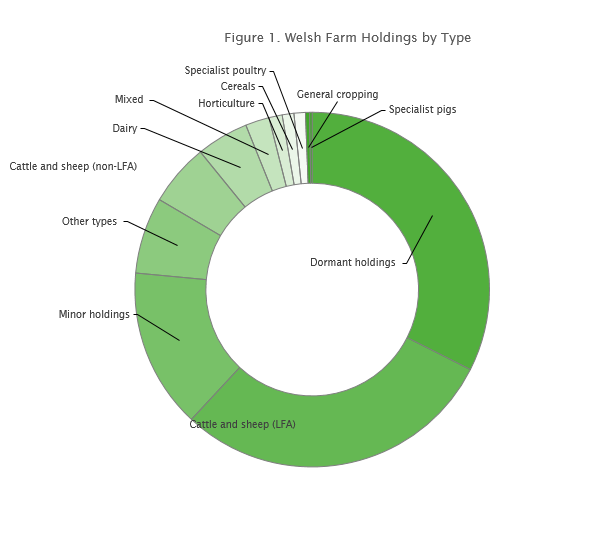Farming in Wales shares some similar characteristics to other parts of the UK but it also has some unique features which shape both the size and character of the industry. These features have shaped and influenced agricultural policy in Wales and are likely to be important as the sector and government considers future policies and strategies for the industry following the UK’s withdrawal from the EU.
We have published a research note on the farming industry in Wales which provides a detailed comparison of the industry to other countries in the UK. This blog highlights some of the key similarities and differences identified in the Research Note.
What is the impact of agriculture on employment and gross value added in Wales?
There were approximately 647,700 people working in the UK agricultural sector in 2015, 9% of which (58,300) are in Wales. Agriculture’s shares of total regional employment in Wales was 4.07%, greater than the national average of 1.42% indicating that agriculture makes a more significant contribution to Welsh employment than in other parts of the UK.
Gross Value Added (GVA) at basic prices measures the contribution to the economy of an industry or sector. Agriculture’s share of GVA in the UK was 0.61% in 2014 and 0.71% in Wales, demonstrating that the economic contribution of agriculture in Wales is also greater than the national average.
What is the average farm income in Wales?
The average farm business income (FBI) represents the return to all unpaid labour (farmers, spouses and partners) and to all their capital invested in the farm business including land and farm buildings. In Wales, the average FBI in 2014-15 was £29,000, less than in England (£40,000) and the UK (£35,000) as a whole.
According to Forecasts of Farm Incomes 2015-16, the average FBI in Wales decreased to £24,500 compared to 2014-15 which reflects the decrease in prices paid to famers for their produce. This was specifically the case in the dairy sector which saw a 40-45% decrease in Wales and England and an almost 80% decrease in Northern Ireland. For more information on the fall in farm incomes see our previous blog post.
How is agricultural land used in Wales?
Wales comprises 10% (1.753m hectares) of utilised agricultural area of the UK and 9% (2.1m hectares) of the land mass. Approximately 84% of the land area is used for agriculture, greater than the other devolved countries. Land use is dominated by permanent pasture grassland, which accounts for more than 75% of the utilised area followed by 14% for croppable and 10% for common rough grazing.
Approximately 80% of the land area is designated as a less favourable area (LFA), i.e. where production conditions are difficult such as areas where land, climatic and cultivation conditions are poor.
What is the breakdown of farm holdings?
According to Agriculture in the UK 2015, there were approximately 214,500 farm holdings in the UK in 2015, 16.2% (34,800) of which were in Wales. The average size of holdings in Wales was 48 hectares, smaller than both England (88 ha) and Scotland (107 ha).
Figure 1 shows a detailed breakdown of farm holdings by type in Wales. Cattle and sheep grazing on LFA land accounts for approximately 29% (10,805) of holdings in Wales reflecting the dominance of grassland pasture on LFA land. In contrast, cereals, general cropping and horticulture account for only a combined 2.7% (972) of holdings reflecting the relatively limited amount of croppable area.

Source: Welsh June Agricultural Survey. Farming, Facts and Figure Wales, 2016.
The Conclusion
Agriculture in Wales is heavily focused on the grazing of livestock, specifically sheep, on LFA land in comparatively small farm holdings that make relatively modest incomes.
The pattern of farming in Wales is dictated by a number of factors, the most important of which include;
- Wales is more mountainous and has a wetter climate than much of the UK so a large proportion of the country is classified as LFA. The land is therefore more suited to pasture and livestock farming and not arable cropping.
- The widespread highlands are more favourable towards sheep, specifically hardy Welsh Mountain sheep.
The dairy industry and arable farming are restricted to the more geographically and climatically productive areas. These are predominantly in lowland areas in the southwest, southeast, northeast, coastal regions and river valleys.
Article by Edward Armstrong, National Assembly for Wales Research Service




